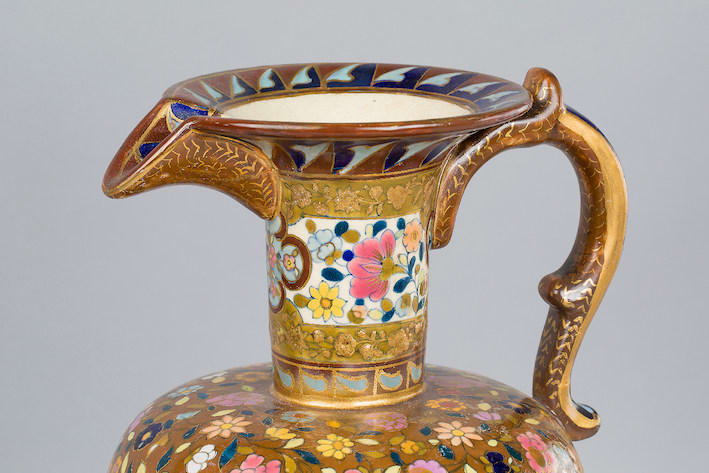Hand decorated and gilded ceramic Fischer pitcher, 19th Century CE
Maiolica
CB.3154
Further images
Ignác Fischer acquired his skills and experience initially at his father’s small ceramic workshop in the city of Tata-Tóváros, in northwestern Hungary. He then refined and developed further his knowledge...
Ignác Fischer acquired his skills and experience initially at his father’s small ceramic workshop in the city of Tata-Tóváros, in northwestern Hungary. He then refined and developed further his knowledge when he started working at the famous Herend Porcelain Manufactory, a Hungarian manufacturing company specialized in hand-painted and gilded porcelain objects. Ignác Fischer is not the same person as the 2nd owner of the original Herend factory, Móric Farkasházi Fischer, and he proceeded to found his own workshop at Pest in 1864. At a first stage he was hand-decorating the porcelain products which had been created by other factories. However, he started creating, firing and producing his own ceramics in 1867. Fischer specialized in the production of very ornamental hand-decorated ceramics, becoming extremely successful with his Majolica ware, fanciful creations based on typically Hungarian decorative motifs, incorporating middle eastern and oriental designs as well, which was not only sold in the Austro-Hungarian empire but was also extensively exported abroad. Fischer also produced pieces decorated with Chinese motifs which were sold at the Hungarian Exposition of 1885. He became very successful and was awarded a number of major awards. Eventually his son Emil took over the operation of his workshop though under his directorship the factory gradually began to lose its standing and was eventually bought out and became the property of the Zsolnay Factory in Pécs, in the southwest of Hungary.











